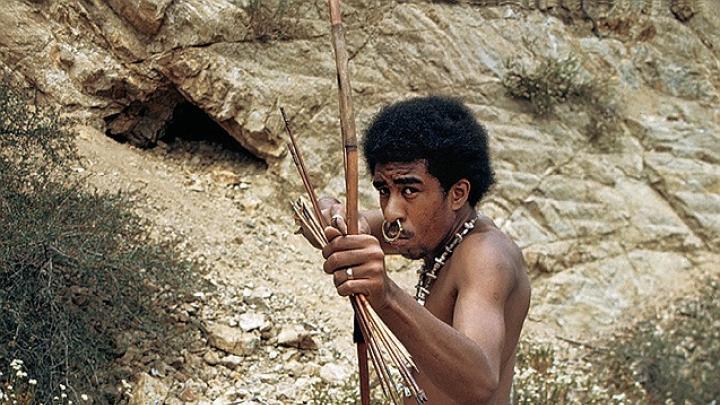In his 1997 book Rock This! the black comedian Chris Rock sends up the “Uncle Tom” stereotype of a subservient African American who kowtows to the majority culture. Rock affectionately describes his gay uncle, whose name is Tom. “We call him Aunt Tom,” he writes, adding, “I love my Aunt Tom. I know that if I was in a fight, Aunt Tom would take off his pumps and whip some ass.”
This example appears in Laughing Fit to Kill: Black Humor in the Fictions of Slavery, a new book by Glenda Carpio, associate professor of African and African American studies and of English. The book—six years in the making—describes how slavery has provided both a backdrop and a wellspring of raw material for much African-American humor.
Some of the book’s examples are hilarious, others disturbing, but the analysis is dead serious throughout. “I don’t treat humor lightly, though I enjoy it,” Carpio says. She shows how black comedians, artists, and writers have “conjured” slavery-based stereotypes and themes, resurrecting images, characters, and events from the past to re-examine them in the present, often through the lens of comic imagination, to transform deep suffering into cathartic laughter and insight.
The comedian Dave Chappelle, for example, once played the slave Kunta Kinte in a parody of the 1977 miniseries Roots during an episode of his Chappelle’s Show (formerly on Comedy Central). “[A]s Kunta, he receives interminable lashes for refusing his new, slave name,” Carpio writes. “But just as the lashing begins to become unbearable, Chappelle’s Kunta suddenly frees himself from the post to which he is tied, runs to the overseer, and proceeds to beat him. ‘What did I tell you about getting out of hand!’ yells Chappelle, turning his back to reveal the thick padding that protected him from the lashes all along.
“Chappelle employs classic postmodern techniques to measure the distance from his subject,” the passage continues. “Not only are his scenes representations of representations, but they also flaunt their seams, thus bringing attention to the process of making fiction while commenting on the overt familiarity of the scenes they parody.”
Besides discussing modern comic artists such as Chappelle and Richard Pryor, Carpio ranges back to seminal black fiction writers like William Wells Brown (1814-1884) and Charles W. Chesnutt (1858-1932). Laughing Fit to Kill also conducts probing analyses of several major figures, including modern painter Robert Colescott, visual artist Kara Walker, novelist Ishmael Reed, and dramatist Suzan-Lori Parks, who, in 2002, became the first African-American woman to win the Pulitzer Prize for drama, for her play Topdog/Underdog. “I wanted to make the connection between high and low, polite and popular culture,” Carpio explains, “to show how the legacy of slavery is treated from both ends.”
She also writes to “critique the knee-jerk reaction we have to stereotypes, that they are simply bad,” Carpio says. “They’re also seductive. Artists invite us to examine why stereotypes persist, and to consider the power they have. We protest against them, but something is keeping them alive. The conjuring artist says, ‘I’m going to bring these things fully alive in front of you, and make them bigger and louder and get you to ask what it is that drives these stereotypes.’ The major ideology of slavery—that the human body is a commodity—persists in the marketability of racial stereotypes now.”
Even a figure with the gravitas of Frederick Douglass “was a really good mimic,” Carpio says. “In his lectures, he could imitate the slaveholders and the mockery they made of basic human institutions like marriage and family—fathering children they would then own.” Douglass eventually gave up such burlesques in the years just before the Civil War.
In 2005, Chappelle made a very different renunciation, but one that may have drawn on similar principles. His show had been a huge commercial success: the DVD of its first season sold more than three million copies, setting a record for a television program. Yet Chappelle turned down a $50-million offer from Comedy Central to write and perform two more seasons. “He was worried that the audiences were not laughing in a critical way—that they were just consuming these stereotypes, not thinking about them,” Carpio explains. “Sometimes people don’t get the humor—that’s a huge risk that artists who trade in stereotypes take. I’m interested in artists who take those risks.
“People see African-American humor as a folk expression,” she continues. “They don’t see it as an art form. Scholars might use sophisticated analytic tools to study the humor of, say, Samuel Beckett, but they drop all those tools when they turn to black humor. The notion is that black humor is not creative, it’s just folk stories handed down. I wanted to take a sophisticated approach to the artistry of black humor.”









